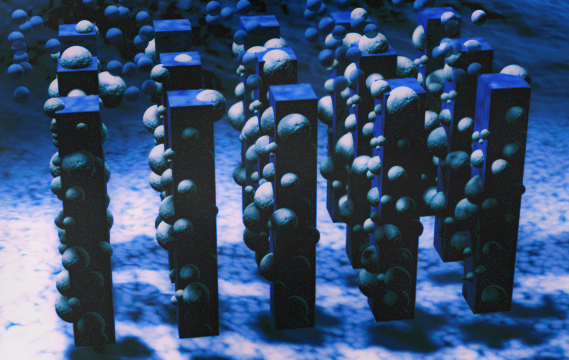Host-guest nanowires for efficient water splitting and solar energy storage

California is committed to 33 percent energy from renewable resources by 2020. With that deadline fast approaching, researchers across the state are busy exploring options. Solar energy is attractive but for widespread adoption, it requires transformation into a storable form. This week in ACS Central Science, researchers report that nanowires made from multiple metal oxides could put solar ahead in this race.
One way to harness solar power for broader use is through photoelectrochemical (PEC) water splitting that provides hydrogen for fuel cells. Many materials that can perform the reaction exist, but most of these candidates suffer from issues, ranging from efficiency to stability and cost. Peidong Yang and colleagues designed a system where nanowires from one of the most commonly used materials (TiO2) acts as a "host" for "guest" nanoparticles from another oxide called BiVO4.
BiVO4 is a newly introduced material that is among the best ones for absorbing light and performing the water splitting reaction, but does not carry charge well while TiO2 is stable, cheap and an efficient charge carrier but does not absorb light well. Together with a unique studded nanowire architecture, the new system works better than either material alone. The authors state their approach can be used to improve the efficiencies of other photoconversion materials.
More information: ACS Central Science, pubs.acs.org/doi/full/10.1021/acscentsci.5b00402
Journal information: ACS Central Science
Provided by American Chemical Society


















